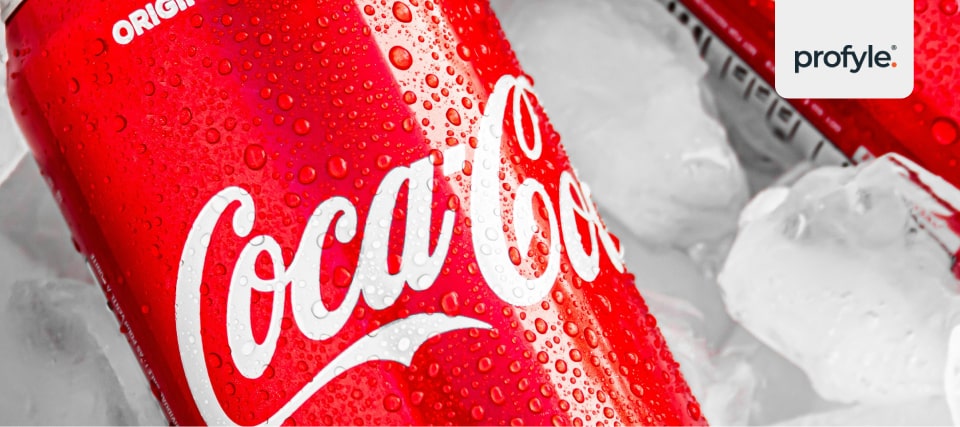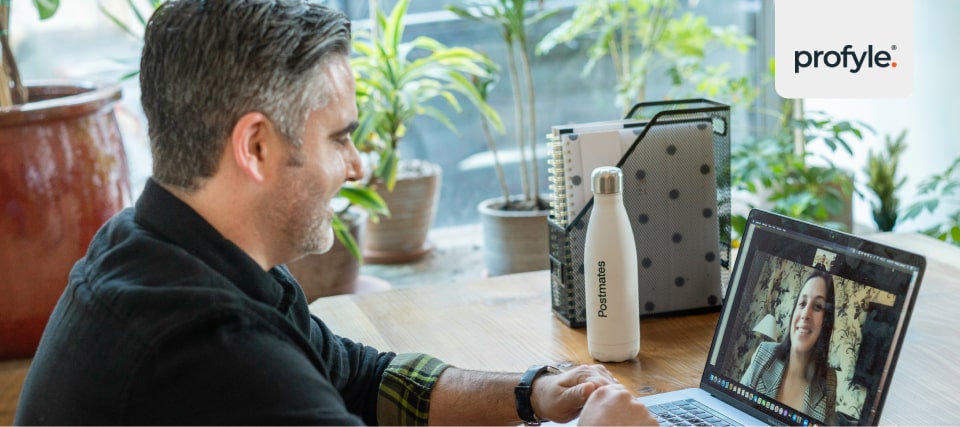
Sometimes it feels like you’ve poured everything into marketing, yet your brand still fades into the background. You cannot afford to let that slide and go on. If for nothing else, because 59% of consumers prefer to purchase from brands they recognise. So, being memorable matters.
Brand awareness is about making your business recognisable and memorable. It’s the difference between a customer choosing your product over a competitor’s.
There’s more to it than just being visible. Brand awareness means being the first name that comes to mind when a need arises. For both B2B and consumer brands (say, for real estate brands), having that recognition is necessary for driving growth.
Most companies try ads, hashtags, or influencers to fix this. Fair enough. But everyone’s doing that! So how do you actually stand out without shouting louder?

We at Profyle have created our take on digital business cards to answer that question.
And they work for both consumer and B2B brands. Sales teams. Customer care. Leadership. Everyone gets the same, sharp look. No typos. No missed contacts. Just one tap, and you’re remembered.

Sometimes people forget your name moments after an introduction. Brands face the same challenge. Studies show that consumers typically recall only 3 to 7 brands when considering a purchase, and they often choose from these familiar names.
Going beyond just remembering your name, brand awareness also means associating your brand with specific products, services, or values. For instance, when someone thinks of athletic shoes, brands like Nike or Adidas might come to mind. This immediate recall indicates strong brand awareness
Why It Matters:
Do you sometimes feel your brand is the best-kept secret? Great products. But no buzz. You’re not alone. A significant number of marketers, 70% to be precise, aim to build brand awareness through social media, yet nearly half struggle to craft strategies that align with their brand’s objectives
Strategies to Raise Brand Awareness:
Profyle offers a modern solution to traditional networking. With features like instant contact sharing, custom branding, and real-time analytics, it ensures your brand remains memorable after every interaction.
Next Steps:
Ready to elevate your brand’s presence? Sign up for a free Profyle Card account here.
Notice how some brands pop into your head instantly, while others fade into the background? That’s the power of brand awareness at work. In fact, brands that are top-of-mind are often the first choice for consumers, even if they’re not the cheapest or most advertised.
Understanding the stages of brand awareness can help your business become that go-to name.

This is the starting point. People see your logo, hear your jingle, or spot your packaging and think, “I’ve seen this before.” It’s about making that initial impression stick.

Now, when someone thinks of a product or service you offer, your brand comes to mind without any prompts. For example, thinking of athletic shoes might bring up Nike or Adidas.

Your brand becomes the first one people think of in your category. It’s like asking for a tissue and someone in America says “Kleenex,” regardless of the actual brand.

At this stage, customers not only recognise and recall your brand but also prefer it over others. They choose your brand consistently, even if alternatives are available.
Profyle helps your brand move through these stages by providing a consistent and professional digital presence. With features like custom branding, instant contact sharing, and real-time analytics, Profyle ensures your brand remains memorable after every interaction.
Ready to elevate your brand’s presence? Sign up for a free Profyle Card account here.
All companies sell products, but some brands become part of our daily conversations. We remember them and create associations based on them. Here are some examples of these types of brand awareness campaigns.
O₂ introduced “Daisy,” an AI-powered chatbot designed to educate the elderly about online scams. This initiative not only showcased O₂’s commitment to social responsibility but also enhanced its brand image as a protector of vulnerable communities.

Targeting university students, Wingstop UK collaborated with the Department for Culture, Media & Sport to address student loneliness. By offering free wings and promoting social interaction, the campaign successfully positioned Wingstop as a brand that cares about student well-being.

Cleo, a financial app, hosted a pop-up café where students could discuss their financial challenges. The event combined free treats with candid conversations, resulting in increased app downloads and social media engagement.
British Airways launched a minimalist out-of-home campaign, using only partial logos and no taglines. This bold approach relied on brand recognition and sparked curiosity, reinforcing British Airways’ confidence in its brand identity.

Youni, a social networking app, offered free wraps to students who downloaded the app. This was simple, yet effective campaign led to a surge in downloads and positioned Youni as a student-friendly brand.
One of the first uses of user-generated content (UGC) in advertising. Chevrolet invited consumers to create ads for the Tahoe SUV, resulting in over 30,000 submissions. Despite some critical entries, the campaign demonstrated the power of user-generated content in enhancing brand engagement.
Most people don’t remember logos they can’t pronounce. And they don’t trust brands they can’t find again in two clicks.
So, here’s the truth: brand awareness today means to be both seen and perceived to be easy.
Brand awareness used to be about being everywhere. Big billboards. Flashy TV ads. Huge budgets.
Now? People remember brands that:
If your brand is too complicated, too hidden, or too slow, people won’t hate it. They’ll just forget it.
This shift is psychological.
Being recognised used to mean winning. Now, it’s not enough. People want to see themselves in your brand. They want to know who you really are. Your voice. Your values. What happens after that “About” page.
Think about the brands you love. You probably remember:
Those are brand moments.
Your brand shouldn’t just be seen. It should be found, felt, and followed up on.
Profyle isn’t just another card. It’s your whole brand—packaged simply.
Every time someone sees your Profyle, they don’t just “see your brand.” They connect with it. And that’s what brand awareness actually means now. If you want your brand to feel remembered, not just noticed—start here. Create your free Profyle Card now.
Sign up for our free 45-day trial and experience the future of networking today. Embrace efficiency, embrace sustainability, embrace the future with Profyle Card.
Don’t forget to follow us on LinkedIn, Instagram and Twitter
Copyright © 2025 Profyle Card Ltd. – Registered in England and Wales with company number 12973729.
Business address: 16 Cole Street, London, SE1 4YH, United Kingdom. VAT registration number: GB424998061